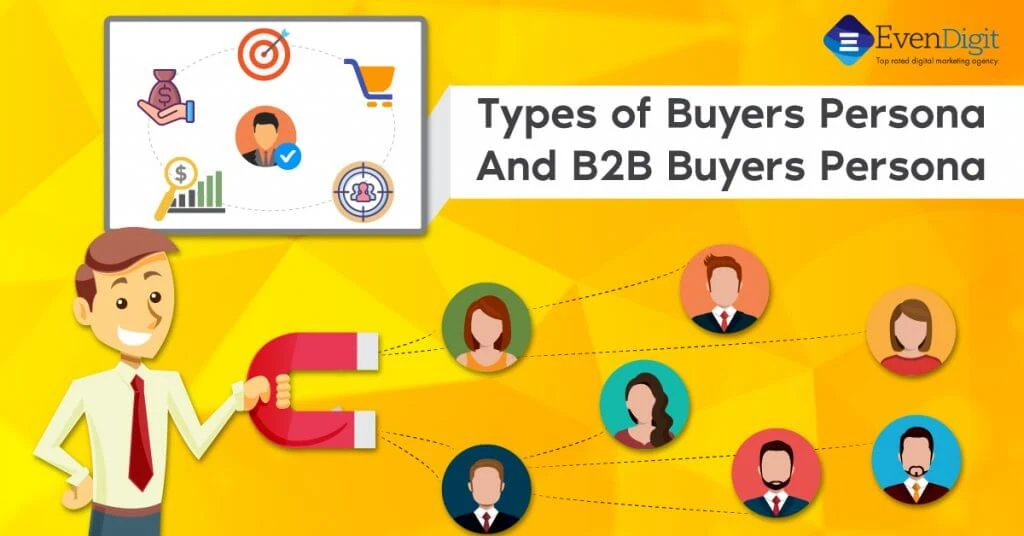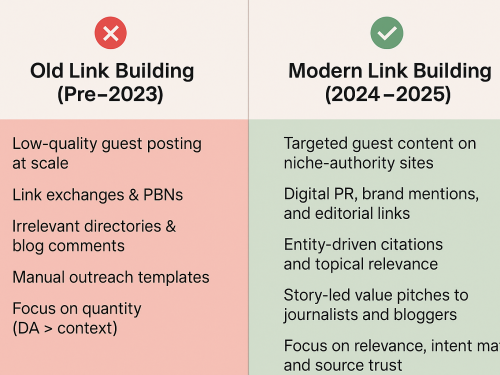
In today’s highly competitive landscape, businesses often struggle to convert leads into customers. One of the reasons for this is that understanding and connecting with your ideal customers is harder than ever. However, B2B buyer personas can provide invaluable insights into reaching your ideal prospects and turning them into loyal customers.
Research from Cintell shows that businesses using well-developed buyer personas in their sales and marketing processes see:
- 10-25% increase in marketing-influenced revenue
- 3X increase in closed sales deals
- 2-3 months shorter sales cycle from persona-based lead generation
Buyer personas are not one-size-fits-all. They can be categorized into different types based on the niche and objectives of a business. But to truly succeed, it’s crucial to create a buyer persona that accurately represents your customers and drives your marketing strategies.
What Are the Different Types of Buyer Personas?
There are several types of buyer personas that you can create based on the research data available. Here are the most common types:
1. Proto Personas
Proto personas are lightweight personas created based on existing knowledge or assumptions about your users. They are often used when no new research has been conducted and can be derived from previous data or insights from your team.
- Pros: Helps in making implicit assumptions explicit within the team.
- Cons: May lead to inaccuracies as they are not research-driven and rely solely on assumptions.
2. Qualitative Personas
Qualitative personas are built from detailed research with small-to-medium sample sizes. These personas segment users based on shared behaviors, pain points, goals, and expectations.
- Pros: Provides valuable insights that are impossible to gather from demographic or analytics data alone.
- Cons: May not represent the entire population accurately due to small sample size.
3. Statistical Personas
These personas are created using both qualitative and quantitative research. They include survey data and deeper qualitative insights to paint a more comprehensive picture of your customers.
- Pros: Provides a clearer view of what percentage of your customer base each persona represents.
- Cons: Time-consuming and expensive to create, and requires statistical expertise.
What Are the Four Types of Buyer Personas?
When defining your buyer persona, you’ll likely encounter four key types: primary, secondary, negative, and aspirational personas. Let’s explore them in detail:
- Primary Persona: The main type of customer you’re targeting. These are the people you primarily want to engage with.
- Secondary Persona: Represents the smaller portion of customers that may have a slightly different need or approach.
- Negative Persona: Identifies who not to target, helping avoid wasting resources on the wrong prospects.
- Aspirational Persona: The ideal version of your customer that you aspire to reach, but may not yet be within your current target market.
For a deeper dive into buyer personas and their importance for your business, check out our article on the importance of buyer personas for your business.
How to Create a Buyer Persona: Key Steps to Success
Creating a comprehensive customer persona is an in-depth process that requires careful research. Here are the steps involved:
- Conduct Surveys and Interviews: Engage with current customers to gather detailed feedback about their challenges, goals, and purchasing behavior.
- Analyze Behavioral Data: Use tools like Google Analytics and social media insights to understand your customers’ interactions with your business.
- Identify Pain Points and Goals: Understand the specific challenges your customers are trying to solve and the solutions they are looking for.
- Segment and Categorize: Group customers based on common characteristics, goals, and behaviors to create different types of personas.
How Do You Define Your Buyer Persona?
A buyer persona is a detailed, semi-fictional representation of your ideal customer. It includes data such as:
- Demographics (e.g., age, gender, income)
- Psychographics (e.g., motivations, challenges)
- Job roles, pain points, and preferred social media channels
- Industry, education, and career goals
Creating buyer personas is critical in personalizing your marketing approach, improving your messaging, and ultimately converting more leads into customers.
Why You Need a B2B Buyer Persona for Your Business
Without a clearly defined buyer persona, both your sales and marketing teams risk wasting valuable resources targeting the wrong people. By using detailed buyer personas, you can ensure that your messaging aligns with your ideal customer, making your campaigns more effective and driving better ROI.
A well-defined persona helps:
- Improve the efficiency of lead qualification
- Tailor your messaging and content to speak directly to your customer’s needs
- Streamline your sales cycle and close deals faster
How to Identify a Buyer Persona: Tools and Techniques
To identify a buyer persona, you need to gather data through various methods. Here’s how:
- Questionnaires & Surveys: Ask your customers direct questions about their preferences, pain points, and purchasing decisions.
- Interviews: One-on-one conversations with current customers help uncover more in-depth insights.
- Sales Team Input: Your sales team has firsthand knowledge of customer preferences and behavior. Use their feedback to refine your personas.
Define Negative Personas: Know Who Not to Target
Creating negative personas is just as important as defining your target personas. Negative personas represent individuals who aren’t a good fit for your product or service. By identifying them, you can avoid wasting resources on unqualified leads.
Start with a Few Personas and Expand
When starting out, create 2-3 primary customer personas that reflect your core customer base. As you collect more data and refine your targeting, you can create additional personas to reach broader audiences.
Conclusion
Building effective buyer personas is essential for any business looking to improve its marketing and sales efforts. By creating personas based on real data, you’ll be able to better understand your customers’ needs, improve your messaging, and increase your conversion rates.
A B2B buyer persona can help your business to target the right customers, craft more personalized content, and drive higher ROI. Be sure to back your personas with accurate data, avoid assumptions, and continuously update them to stay relevant.
For more insights, check out our article on how a buyer persona can help increase your CTR.
EvenDigit
EvenDigit is an award-winning Digital Marketing agency, a brand owned by Softude (formerly Systematix Infotech) – A CMMI Level 5 Company. Softude creates leading-edge digital transformation solutions to help domain-leading businesses and innovative startups deliver to excel.
We are a team of 70+ enthusiastic millennials who are experienced, result-driven, and hard-wired digital marketers, and that collectively makes us EvenDigit. Read More




